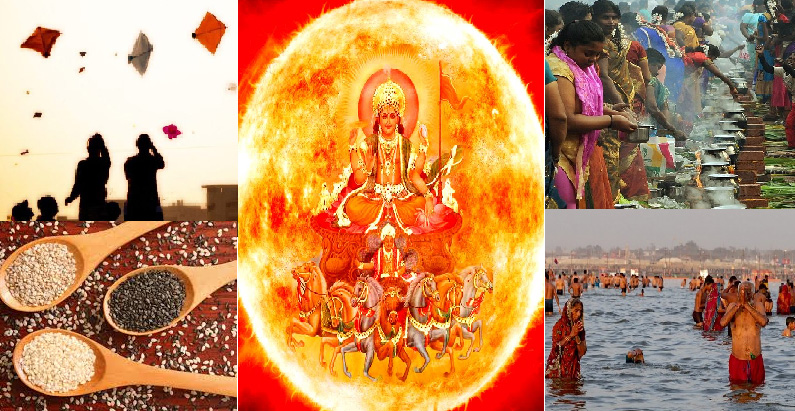
Makar Sankranti
Makar Sankranti is a major Hindu festival celebrated in the Indian subcontinent and by Hindus around the world. It is a solar event that is dedicated to Lord of Sun to pay tribute and to express gratitude for its tremendous energy that has enabled life and food on earth. The festival is a religious celebration as well as a seasonal observance that marks the winter solstice when the shift of the sun leads to longer days. It is a specific solar day in Hindu calendar in which the sun enters the zodiac sign of Capricorn. ‘Makar’ means Capricorn and ‘Sankranti’ means transition.
There are twelve sankrantis in a year- one in each month when the sun moves from one constellation to other. Normally, the sun affects all the zodiac signs but it is said that the entry of the sun in ‘Cancer’ and ‘Capricorn’ is considered slightly more auspicious and religiously more fruitful.
What puts the festival apart from other Hindu festivals is that the date of Makar Sankranti is fixed. It falls on 14 th January every year with some exceptions when it falls on 15 th January. From this day the sun begins its northward journey or ‘Uttarayan’; hence the festival is also known as Uttarayan. Before Makar Sankranti the sun is in the southern hemisphere or ‘Dakshinayan’. The period from Kark Sankranti to Makar Sankranti is known as Dakshinayan. Dakshinayan symbolises the dark part or night of the gods indicating negativity while Uttarayan is the day of gods spreading positivity.
According to Mahabharat, Bhishma Pitamah had waited for the sun to shift Uttarayan to embrace death.
Religious Significance
It is believed to be a time for peace and prosperity. This day is regarded important for spiritual practices. People throng to take dip in the holy rivers like Ganga, Yamuna, Godavari, Krishna and Kaveri. Millions of people gather at their respective sacred places for this holy bathing such as Prayagraj and Varanasi in UP, and Haridwar in Uttarakhand. Those who cannot go, bathe at home by mixing Gangajal in water. People firmly believe that this holy dip will wash away their sins.
Makar Sankranti generally marks the beginning of the Kumbh. Kumbha Mela is world’s largest mass gathering which takes place every 12 years along with Makar Sankranti. Taking a dip on the auspicious occasion of Makar Sankranti is of immense importance for the devotees. It is a popular belief that one who dies on Makar Sankranti is not reborn but directly goes to heaven.
Rituals and Delicacies
Makar Sankranti is a festival of til-gud in which seasame and jaggery laddoos or chikkis are distributed among all. People give many kind of small gifts like til (seasame), gud (jiggery), dry khichdi (rice and pulses), fruits, sweets, clothes etc. to brahmins or the needy ones. The sweets signify that people must stay together in harmony despite their differences.
In UP, the festival is known as ‘Khichdi’. Khichdi is a kind of porridge made with rice and pulses mixed together along with seasonal vegetables. Khichdi is made in almost every house, temple etc. in large amount and many people voluntarily distribute it according to their capacity as this day is considered best for daan (charity).
There is also a particular ritual attached with the festival. On this day married women give 14 things (related to household, make-up or food) to 14 married women as ‘daan’. Moreover, the first Sankranti of a married woman is significant because she is invited by her parents and brothers to their houses with her husband for a big feast. People often invite relatives, friends for a festive meal called ‘Sankranti Bhoj’. Kite flying is also associated with this festival.
Variations Across States
Makar Sankranti festival has different names in different regions. For example North Indian Hindus call it ‘Maghi’ and it is preceded by ‘Lohri’. It is called ‘Poush Sankranti’ in Maharashtra, Karnataka, West Bengal etc., ‘Magh Bihu’ by Assamese and ‘Pongal’ by Tamils. It is celebrated across the country in different ways each region celebrating in their own indigenous manner.
Author Ms Hema Trivedi is an ardent devotee of SriKrishna.